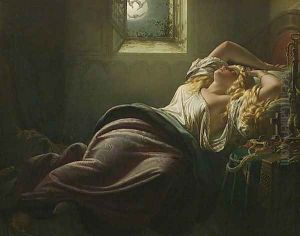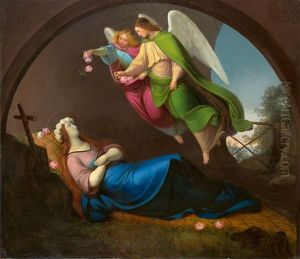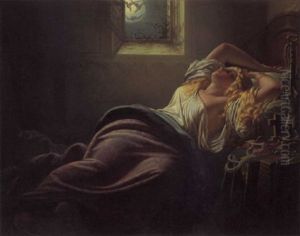Heinrich Schwemminger Paintings
Heinrich Schwemminger was an Austrian painter born on May 7, 1803, in Vienna. His early life was characterized by his passion for art, which he pursued despite the challenges of the time. Schwemminger was primarily known for his genre paintings, portraits, and historical scenes, which were particularly popular in the Biedermeier period, an era in Central Europe between 1815 and 1848 that emphasized a sense of order and tranquility in the aftermath of the Napoleonic Wars.
Schwemminger trained at the Academy of Fine Arts Vienna, where he honed his skills and absorbed the academic principles that would inform his work throughout his career. His paintings often depicted scenes of everyday life, capturing the customs and spirit of the Austrian people. He had a keen eye for detail and a talent for capturing the nuances of human expression, which made his work resonate with viewers.
Throughout his career, Schwemminger received considerable acclaim for his work. He was a contemporary of artists such as Ferdinand Georg Waldmüller and Peter Fendi, who also depicted scenes of Viennese life. While not as widely known as some of his peers, Schwemminger's contributions to Austrian art have been appreciated by art historians and collectors. His works are held in various collections and have been exhibited in museums dedicated to the Biedermeier period.
Heinrich Schwemminger's career spanned a period of significant political and social change in Europe. Despite this, his art retained a sense of timelessness and an appreciation for the quieter aspects of life. He passed away on December 14, 1865, in Vienna, leaving behind a body of work that continues to be studied and admired for its portrayal of 19th-century Austrian culture and society.





